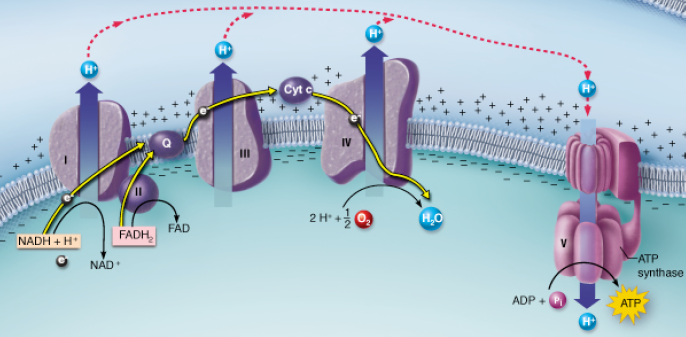Which of the following describes the event depicted on the right side of the figure?

a. active transport of H+ ions
b. oxidation of ADP
c. ATP synthesis by oxidative phosphorylation
d. substrate level phosphorylation
c. ATP synthesis by oxidative phosphorylation
The event at the right depicts how chemiosmosis is used to power ATP synthesis by oxidative phosphorylation.
You might also like to view...
Which of the following is not true of topoisomerase inhibitors?
A. They are effective against cancer cells and are currently used in chemotherapies against colorectal and ovarian cancer. B. They are effective against bacterial infections such as infections by the bacteria that cause anthrax. C. They are highly specific so there is negligible general toxicity and usually no unpleasant side effects associated with anticancer therapies that target topoisomerases. D. The anticancer agents that target topoisomerases generally increase the levels of DNA damage in targeted, rapidly growing tumor cells. E. They inhibit topoisomerases by trapping the topoisomerase-DNA complex in which the DNA is normally cleaved, preventing religation.
DNA-binding transactivators are:
A. necessary only for initiation of transcription of housekeeping genes. B. factors that bind to other proteins, not to DNA directly. C. factors that complex directly with RNA Pol II to form a preinitiation complex. D. factors that bind to enhancers.
Which of the following statements about radioactivity is false? a. Radioactive decay can transform one element into another
b. Radioactive emissions are due to the spontaneous breakdown of atomic nuclei. c. Radioisotopes decay into predictable products. d. Radioactive decay can be accelerated by increasing temperature and pressure.
Which factor increases the likelihood of population extinction?
A. large population size B. isolation of a population from density-independent effects C. isolation of a population from sources of immigrants D. high resource availability E. high genetic diversity